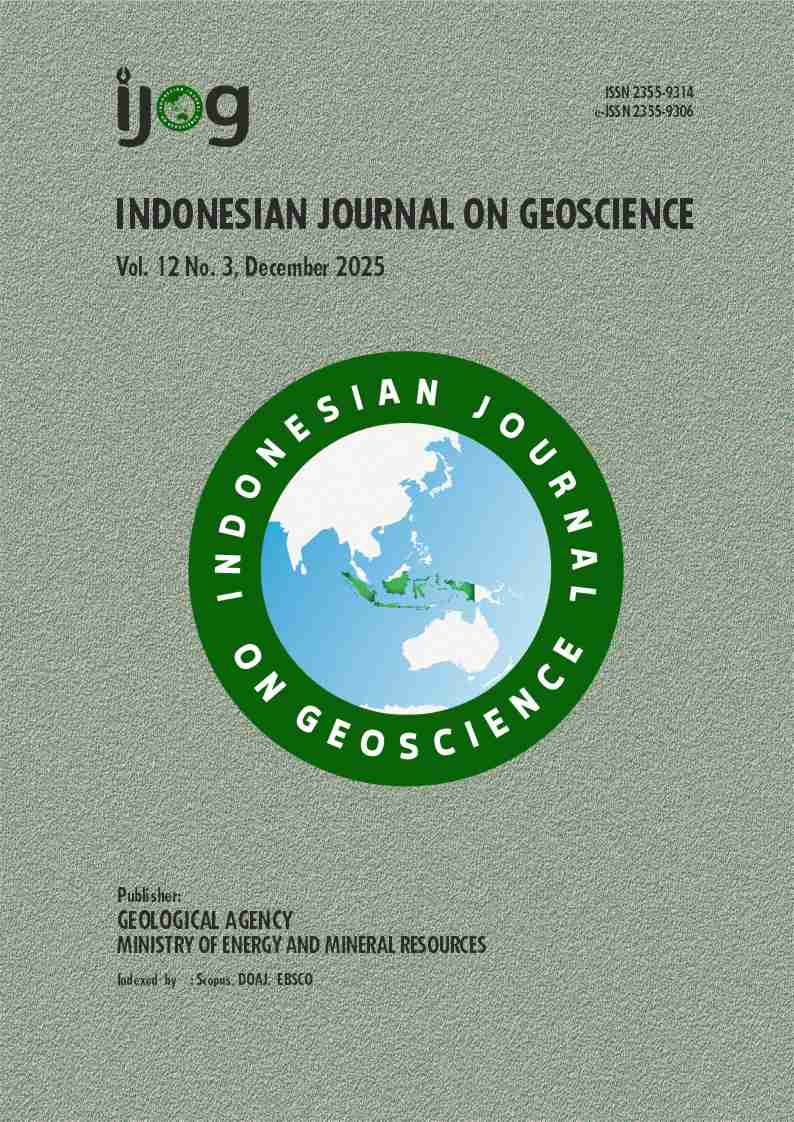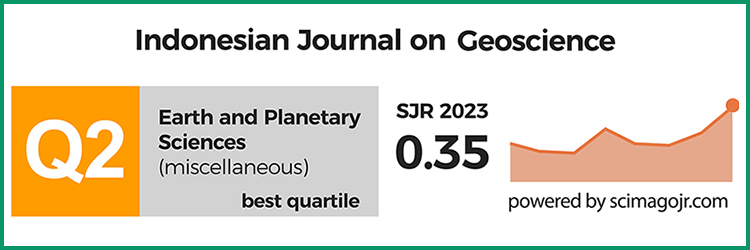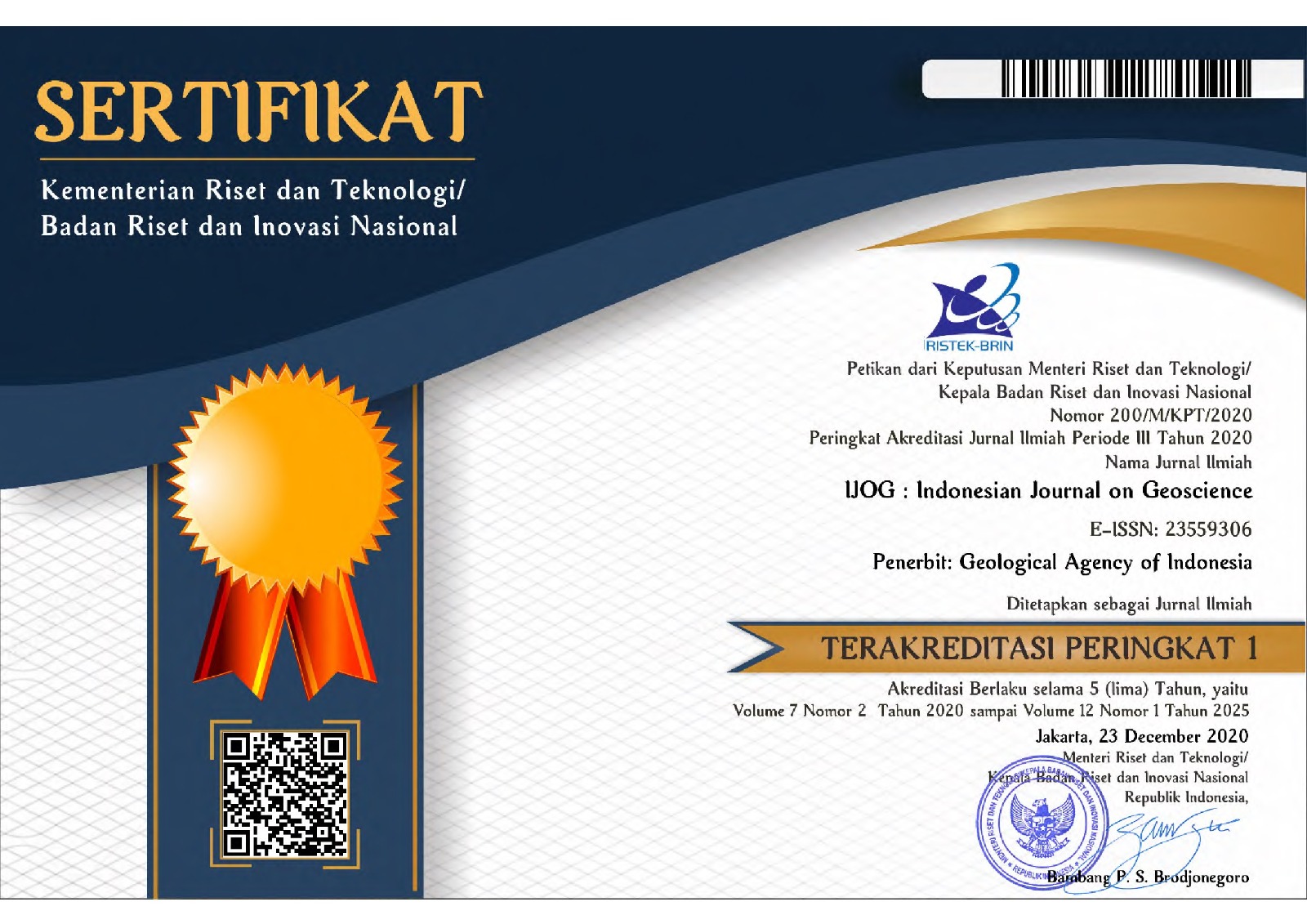Insight Into The 2024-2025 Eruption of Lewotobi Laki-Laki Volcano in Flores Island, Indonesia: An Overview
DOI:
https://doi.org/10.17014/ijog.12.3.1-9Abstract
Between November 2024 and April 2025, Lewotobi Laki-laki Volcano (1,584 m a.s.l.), situated in Flores Regency, East Nusa Tenggara, Indonesia, exhibited eruptive activity that significantly impacted the surrounding environment. Volcanic ash was extensively deposited across residential areas, agricultural land, and forested regions. Two major eruptive events occurred on 3rd November 2024 and 20th March 2025. Historical records indicate that Lewotobi Laki-laki has been active since 1861 CE, typically characterized by mild eruptions involving ash emission, lava flows, and dome formation. However, in the beginning of November 2024, the volcano activity intensified, culminating in a directed blast eruption on 3rd November at 23:57 Central Indonesian Time from its northwestern upper flank (Kushendratno et al., 2024). This event ignited fires in nearby villages, and resulted in nine fatalities due to exposure to blast material. Subsequently, on 20th March at 22:56 Central Indonesian Time, a vertical explosive eruption occurred from the central vent, generating an eruption column that ascended to approximately 8,000 m (Kristianto et al., 2025), and produced column collapse predominantly affected the west ̶ northeastern flank, causing three reported injuries. These incidents highlight the critical need for proactive eruption forecasting and the implementation of corresponding mitigation strategies. The eruption on 3rd November 2024 prompted a revision of the Lewotobi Lakilaki hazard map, reflecting a newly observed eruptive style with a pronounced northwestern trajectory.



















